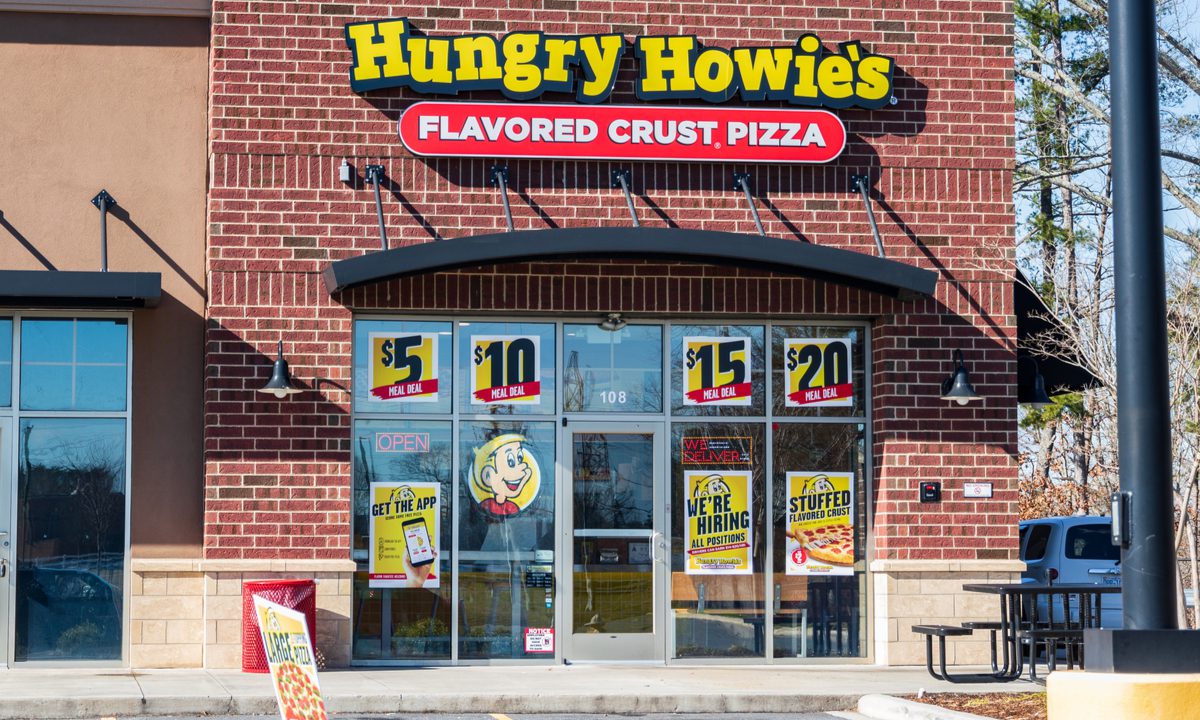
Today’s restaurants are facing both unprecedented opportunities and unprecedented challenges.
On the one hand, in the aftermath of the first two years of the pandemic, consumer demand is high, with many people seeking out both on- and off-premise culinary experiences. On the other hand, the combination of staffing difficulties, inflation and supply chain challenges make it difficult to meet this demand.
See also: Food Prices, Labor Shortage, Supply Chain Issues Threaten Restaurant Sales
Jim Murabito, executive vice president of supply chain at Madison Heights, Michigan-based restaurant chain Hungry Howie’s Pizza, which has more than 550 locations across 22 states, explained to PYMNTS in an interview how these obstacles have shifted the power balance in the restaurant supply chain.
“When COVID hit, the spacing requirements required these manufacturing plants to have an immediate drop in capacity from which they still really haven’t recovered,” he said. “Two years sounds like a long time, but when you’re talking about capital to build a processing plant, they can’t get it done that fast. So, we’ve been dealing with this situation where in years past, suppliers were competing for our business. Now we’re competing for their business.”
The Pizza Problem
Certainly, supply chain challenges are top of mind for many restaurants. Take, for instance, small, independent establishments. Research from PYMNTS’ March study, “Main Street Economic Health Survey: Navigating Economic Uncertainty,” created in collaboration with Melio, which drew from a survey of more than 500 business owners on Main Street U.S.A. between January and February, found that that 22% of these businesses see the inability to purchase from suppliers as a relevant challenge. Moreover, 5% see it as their single biggest challenge.
Read more: New Survey Shows Main Street Businesses Fighting Economic Uncertainty With 3 Key Investments
Additionally, the study noted that 5.5% of Main Street businesses that said there is a high chance they will not survive the next two years, and 14% cited supply chain disruptions as one of the reasons they are pessimistic about survival.
The pizza industry provides valuable insight into these difficulties, with even large chains like Hungry Howie’s experiencing significant challenges. Murabito noted that the players in the pizza space — quick-service restaurants (QSRs), fast-casual brands and some convenience stores, among others — are vying for the same resources.
“They’re all pretty much competing for the delivery times and so forth,” he said.
He noted that the pizza category, given the expectation for speed, has additional constraints, with ingredients needing to be prepared in advance. Cheese, for instance, needs to be pre-diced or shredded and meats need to already be cooked.
“There’s a very small subset of suppliers that actually do that,” he explained.
It’s All Who You Know
Given these challenges, restaurants are doing all they can to improve their inventory management and to get goods and ingredients enough to meet as much of the existing demand as possible. Fast-casual brand Chipotle Mexican Grill, for instance, announced at the end of March that it is testing out radio-frequency identification (RFID) technology to boost inventory management efficiency and precision.
See more: Chipotle Tries out RFID Technology
Meanwhile, grocery giant Kroger announced earlier this month that its Dallas Division is launching a restaurant supply business.
Read more: Kroger Launches Restaurant Supply in Dallas to Ease Market Fluctuation Anxieties
Murabito argued that, in the face of these supply chain challenges, restaurants that have existing, longstanding relationships with suppliers have the advantage. Still, he noted, even these businesses have had to make some changes. Hungry Howie’s, for one, has begun giving vendors months’ notice instead of weeks’ in advance of future purchases.
“When they’re making their production schedules, they’re looking at the orders they have, and if you’re getting your order in in a timely fashion versus two or three weeks like it was in the past, you’re the one that’s going to get on the schedule,” he said.
He added that the company has also increased its storage capacity to reduce the number of total orders needed. Even with these changes, the company has also had to expand its supplier base in recent years to get everything that is needed.
The in-House Advantage
Murabito noted that, with driver shortages contributing so significantly to these challenges, Hungry Howie’s has seen success adding in-house driver training programs as well as taking advantage of what “limited opportunity” there is to reduce the difficulty of warehouse and delivery jobs.
Ultimately, for all the challenges, he added that some of the unpredictability is beginning to subside.
“Everybody’s unsure of what the pandemic issues are going to be in a year’s time, but I think when you talk to the supply base, they feel like they’re starting to get to the new normal,” Murabito said. “I mean, everybody’s understanding what the capacities are and what they can do to impact them. So, I think, at least in pizza, we’re slowly getting back to full allocation.”